#stratton lawrence
Explore tagged Tumblr posts
Text

The Man with Two Heads (1972)
#the man with two heads#denis demarne#julia stratton#gay feld#jaqueline lawrence#1970s movies#andy milligan#andy milligan movies#horror movie poster
42 notes
·
View notes
Text
Sci-Fi Saturday: The Man in the White Suit

Week 30:
Film(s): The Man in the White Suit (Dir. Alexander Mackendrick, 1951, UK)
Viewing Format: Streaming - Kanopy
Date Watched: 2022-02-18
Rationale for Inclusion:
Given that Ewan McGregor has been playing Obi-Won Kenobi in live-action Star Wars media off and on since 1999, would anyone under 30 years-old be able to place Alec Guinness by me saying, "You know, Obi-Won Kenobi in Star Wars?" To Millennials and older geeks this lack of cultural touchstone would hurt our brains, but the knighted, most accomplished character and dramatic actor himself would be relieved that Star Wars (Star Wars: Episode IV: A New Hope, Dir. George Lucas, 1977, USA) may not be what he is remembered most for in 2024, as it was not his favorite role despite the financial stability it enabled for him. Granted, I don't know what other example of Guinness' filmography I would use for someone under 30 who doesn't attend classic cinema film festivals. Star Wars is still better known than Lawrence of Arabia (Dir. David Lean, 1962, UK) or Kind Hearts and Coronets (Dir. Robert Hamer, 1949, UK) by the mainstream populus of the United States.
I begin on this note because this week's film, The Man in the White Suit (Dir. Alexander Mackendrick, 1951, UK), stars Sir Alec Guinness in a comedic role, which while not unusual for him, especially in the 1950s, is not the work for which the mainstream consciousness most remembers him. A chance to witness more of Guinness' incredible range was part of the reason for selecting this film, as was the fact that the last British sci-fi satire that we watched for the survey, Once in a New Moon (Dir. Anthony Kimmins, 1935, UK), has been one of the great discoveries by my partner and I on this cinematic journey thus far. Plus, according to the British Film Institute, The Man in the White Suit is the 58th greatest film to come out of its country.
Reactions:
Being familiar with Guinness' dramatic work, it came as no surprise to me or my partner that the actor turned in a brilliant performance as Sidney Stratton, a research chemist bent on creating an indestructible fiber. The number of lab explosions and subterfuge Stratton undertakes gives his comedic timing ample opportunities to shine.
The emphasis on chemistry led to the inclusion of the "Guggle Glub Gurgle" song to accompany the chemicals burbling, moving and bubbling. My partner and I assumed that it must have been the work of the BBC Radiophonic Workshop, who created the music and sound effects for Doctor Who and both the radio and television versions of The Hitchhiker's Guide to the Galaxy. To our surprise, the experimental and pioneering electronic music and sound production company was not formed until 1958; 7 years after the release of The Man in the White Suit. Instead, the creative composition was created by sampling sounds made by actual equipment, which may make it the most widely heard example of musique concrète.
The slapstick humor transitions more into satire when Stratton successfully completes the first batch of his indestructible, radioactive fiber, and makes it into the suit of the title. The viability of cloth that does not stain or wear out causes a panic amongst everyone from capitalists, to textile workers, to little old ladies who take in others' washing for a bit of money. The economy and culture would be upended by it in a way that was too massive for people to handle. Luckily for the conservative minded, a flaw in the formula causes the cloth to gradually break down over a few weeks. With Stratton's firing, the threat seems to be neutralized. Except, Stratton has a revelation whilst looking at his formula notes, and at the end strides off, presumably to seek out a means of creating a second version of the indestructible cloth.
Stratton continues the tradition of the mad scientist, but instead of upending morals and religion like his predecessors, he upends capitalism and commerce. Given the post-World War II industrial boom many countries experienced, and the Cold War being configured on communist versus capitalist lines, it's an evolution keeping with the times in which the film was created. He is nevertheless just as antisocial and obsessive as his predecessors Henry Jekyll and Victor Frankenstein.
He also carries on the mad scientist tradition of experimenting on himself by wearing a suit made of his indestructible fiber. Stratton is not merely daily driving his cloth, the way new products are tested for their practicality, because the fiber includes radioactive elements. The long term damage of radiation exposure through patent medicines containing radioactive elements and working with radioluminescent paints was known by the 1930s. It is entirely possible that Stratton could have developed a version of the formula where the cloth would not deteriorate, but the person wearing it would do so horrifically. At that point his cloth would not only be a direct economic threat, but a direct threat to public health.
My speculating and interpreting of the invention central to the film aside, The Man with the White Suit is a fun piece of sci-fi and satire, managing to be equal measures funny, smart, and thought provoking. It's widely available on streaming and home media formats, and definitely worth a watch.
3 notes
·
View notes
Text



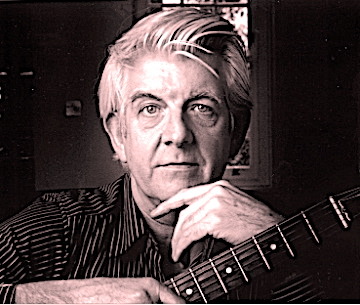

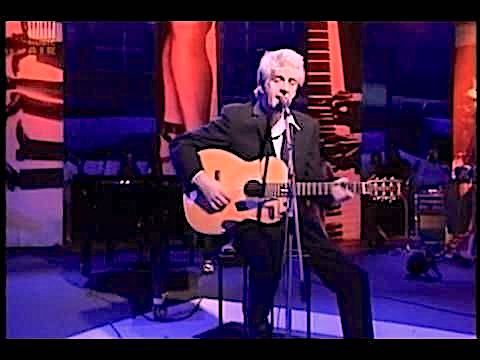
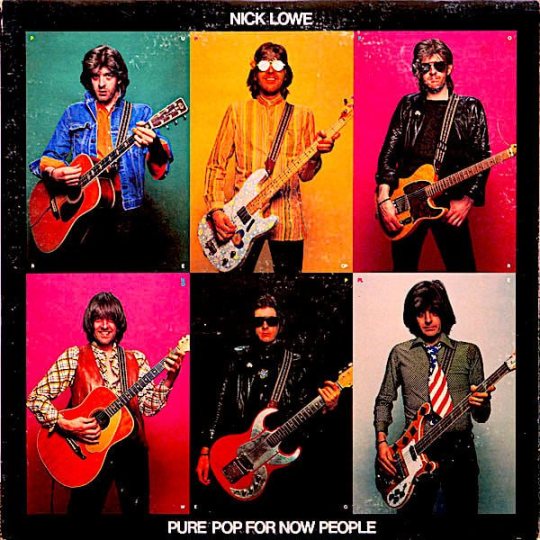
HAPPY BIRTHDAY to pedal steel guitarist Joe Alterio, composer John Antes, Dave Appell, Roscoe Arbuckle, J.S. Bach’s BRANDENBURG CONCERTOS (1721), Joseph Barbera, the 1980 Beatles RARITIES LP, Beethoven’s MISSA SOLEMNIS (1824), Laura Flynn Boyle, Sharon Corr, Don Covay, Fanny Crosby “Queen of Gospel Songwriters,” Klaus Dinger (Kraftwerk), Lawrence Ferlinghetti, Gorgeous George, the 1988 musical GOSPEL AT COLONUS, civil rights activist Dorothy Height, Connie Hines (Mr. Ed), Patterson Hood (Drive By Truckers), Harry Houdini, Yanks Janis, Carol Kaye, Mike Kellie (Spooky Tooth), Krisdayanti, Kelly LeBrock, Pacemaster Mase (De La Soul), Steve McQueen (got that song waiting for you), Malcolm Muggeridge, Nivea, Lee Oskar, Paradox Thought, Joseph Priestley, cellist Hank Roberts, Klavdiya Shulzhenko, Billy Stewart, Dorothy Stratton, Sylvester the Cat, Dougie Thompson (Supertramp), Fred Vail, Boogie Bill Webb, Tommy Wilson, and the great singer-songwriter, producer, and entertainer Nick Lowe. If you collected all the recordings he’s produced, played on, and/or wrote songs for (plus the cover versions), you’d have an amazing, well-rounded record library par excellente. He’s intersected with Johnny Cash, Elvis Costello, Dave Edmunds, and a galaxy of other notables. Seeing him with Rockpile (twice) left an indelible impression on me in terms of stage presence and entertainment value. When his PURE POP FOR NOW PEOPLE LP came out, it became required listening in my social circle. I read that Nick never does live performances of his song “I Love the Sound of Breaking Glass” (allegedly a comeback to a Blondie song). So here’s my take of it, live at the Cellblock (opening for The Badlees). Meanwhile, HB Nick!
#nicklowe #breakingglass #johnnyjblair #singeratlarge #thebadlees #cellblock #williamsportPA #concert #soloacoustic #blondie #elviscostello #johnnycash #daveedmunds #rockpile
#Nick Lowe#breaking glass#Johnny J Blair#singer songwriter#singer at large#The Badlees#Cell Block#Williamsport#Pennsylvania#Blondie#Elvis Costello#Johnny Cash#Dave Edmunds#Rockpile#Bandcamp
4 notes
·
View notes
Text

FLP CHAPBOOK OF THE DAY: Ear to the Ground by Harriet Stratton
On SALE now! Pre-order Price Guarantee: https://www.finishinglinepress.com/product/ear-to-the-ground-by-harriet-stratton/
Poems in Ear to the Ground remember Stratton’s father and mother and draw from the #lifestyle that like an album of fading snapshots backgrounds her upbringing on a #Colorado #cattle #ranch. There, she learned to remember on a cultural level, too. Traces of things forgotten in have led her to study prehistoric language; pictures written on stone, petroglyphs and pictographs, and marks left on the surface of the earth. In the blender of language remembered and forgot, she strives to interpret the code. As Lawrence Raab writes, “the past isn’t over until we understand it”.
Harriet Stratton’s work has appeared in Pilgrimage Magazine, Windward Review, and among other publications, Passager Journal. “While Making Fence with My Father” was featured in their Burning Bright podcast on Father’s Day, 2022. Her work is anthologized in An Uncertain Age, Poems by Bold Women of a Certain Age (Ink Sisters Press, 2021) and Rumors, Secrets & Lies, Poems About Pregnancy, Abortion & Choice (Anhinga Press, 2022). The editors of Anhinga Press nominated Harriet’s poem, “Caught in Amber” for a 2023 Pushcart Prize. This is her first chapbook. Harriet lives and writes atop a red rock butte in Perry Park, Colorado. A longtime member of Denver’s Lighthouse Writer’s Workshop, she graduated from the Poetry Book Project and remains a member of the Poetry Collective. Formally educated in Design and Art Education, Stratton practiced what she taught – painting, drawing and printmaking – in a 25-year teaching career.
Please share/please repost #flpauthor #preorder #AwesomeCoverArt #poetry #chapbook #read #poems
#poetry#flp authors#preorder#flp#poets on tumblr#american poets#chapbook#chapbooks#finishing line press#small press
1 note
·
View note
Text
On Immortality
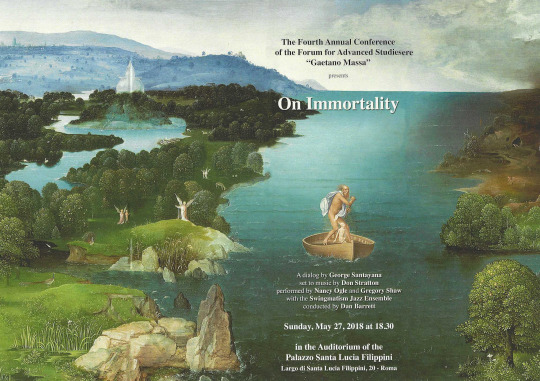
On Immortality
A Dialogue by George Santayana Set to music by Don Stratton Directed by Dan Barrett with Nancy Ellen Ogle and Gregory Shaw, narrators and the Swingmatism Jazz Ensemble: Jay Bregman, tenor saxophone Dan Barrett, trombone Colin Graebert, piano Bob Roman, bass Bobby Duron, drums
Notes An ancient Greek myth about the after-life turns out to have been true. A stranger who has recently died finds herself on a raft crossing the River Styx, being ferried along with other newly departed souls to the Island of Remembrance by the god Charon.
In this modern version of the myth, Santayana engages the departed soul in conversation with the gaunt ferryman, exploring issues of life and death. In Santayana’s view, truth is simply everything that has actually happened; as such, it is impossible for anyone to live in the present and, at the same time, live in the truth. On realizing this view, the stranger becomes liberated from previous notions about living and dying and is newly able to enjoy the phenomena of existence as they arise.
Don Stratton (1928-2016) was a teacher, composer and trumpet player of national acclaim. In 1976, Don's “The Seasons in Maine” was performed by the Bangor Symphony at the Kennedy Center in Washington D.C., representing our State in the national bicentennial celebrations.
A Clark Terry protégé, Don was known as a trumpet player influenced by Bix Beiderbecke (as well as modern jazz trumpet players. Notably he blew with Phil Woods, Kenny Clarke), Elliot Lawrence and Claude Thornhill. His American Post-Forty Blues, for orchestra and solo trumpet is a perfect example of Third Stream Music.
As Professor of Music at UMaine, Don created the 20th Century Music Ensemble, in which students enthusiastically performed a wide variety of jazz along with far out experimental works and lyrical compositions. Don's music is archived in a special collection at the Bangor Public Library.
Philosopher George Santayana (1863-1952) wrote in a broad spectrum of genres. His major works include The Life of Reason (5 vols.), The Realms of Being (4 vols.) and a best-selling novel, The Last Puritan. He spent his final years living in Rome, where he wrote “On Immortality,” which was published posthumously.
Emeritus Professor of History, and member of the Board of Directors of the International Society for Neoplatonic Studies, Jay Bregman has taught at UCLA, UC Berkeley and Howard University, as well as at UMaine, where he has taught History of Jazz for over 30 years. He studied Jazz with Lennie Tristano, Yusef Lateef and Don Stratton, and played with Don. For a decade, he and Don taught an Honors Seminar on American Aesthetics and Subcultures, covering such topics as the New England Transcendentalists, Zen, Ives and Monk, Neoplatonism, the Beat Authors and Pythagorean Aesthetics. Tonight’s composition reflects that interdisciplinarity.
UMaine Professor Nancy Ellen Ogle’s work with contemporary composers is available on recordings on Capstone, Cormorant, Woodsum, New Media Productions and Parma labels. In 2014, Nancy was a Grammy nominee in the category of best classical solo vocal recording for a CD of Scott Brickman’s music featuring Ogle singing his Dear Darwin songs (Ravello Recordings). Nancy has premiered several of Don Stratton’s compositions, including A Recital of Birds and Ktaadn.
A fellow of the F.S.A., Gregory J. Shaw is Professor of Religious Studies at Stonehill College (Massachusetts, USA). His research interests include Religions of Late Antiquity, especially Neoplatonism; history of divination with an emphasis on dreams; contemporary religious movements that draw from Hermetic and Platonic sources; Jungian psychology; UFO phenomena.
Dan Barrett teaches trombone, tuba, jazz improvisation, jazz piano and arranging, and runs the jazz combo program at the University of Maine. He has been privileged to perform with many jazz greats including Bob Mintzer, Conrad Herwig, Andy Martin, John Fedchock, Thomas Gansch, Ingrid Jensen, Phil Markowitz, Eric Marienthal and Byron Stripling.
Colin Graebert has been playing jazz piano in Maine for almost twenty years. He is an active member or the Maine music scene as an accompanist, choir director, vocalist, musical theatre director and clinician. He recently graduated from the University of Maine with a Bachelor of Music in Music Education and is looking forward to officially joining the ranks of Maine’s music teachers. He lives in Stockton Springs with his wife, Hilary, and two children, Eric and Ruth.
UMaine graduate and student of Don Stratton, Bob Roman maintains an active performing schedule. In addition to this ensemble, he is also a member of the house band on “The Nite Show with Danny Cashman” and many others.
Bobby Duron has been playing drums professionally for over 40 years. Originally from Dallas, Texas, he now resides in Hampden, Maine, where he is a professor at Husson University and an active freelance musician and clinician in the greater Bangor area.
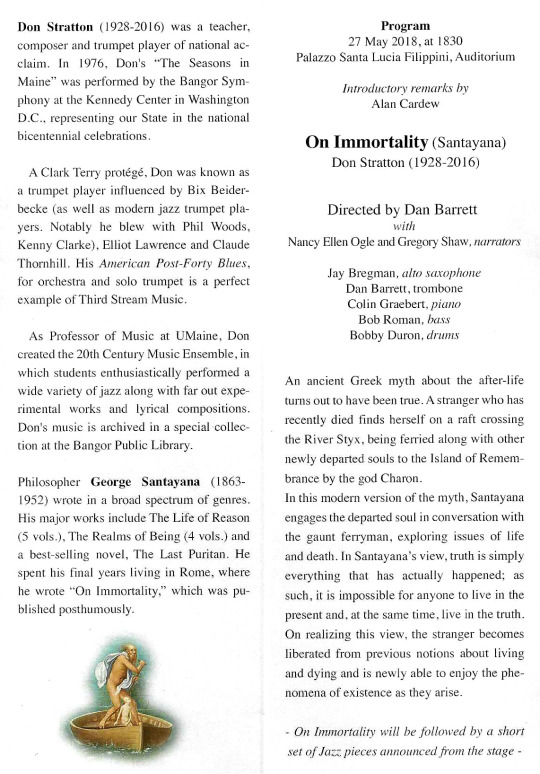
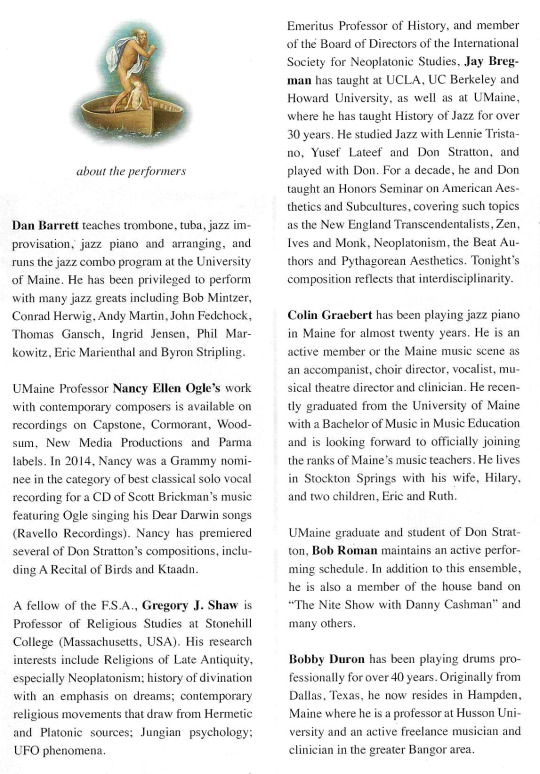
0 notes
Text


Mrs. George Frederick Stratton by Thomas Lawrence
#art#ringling museum#museum#art stuff#art appreciation#art study#art musuem#painting#artistic#ringling#art history#oil painting#paint#1800s#1811#1800s Art#19th century art#thomas lawrence#oil on canvas#dog
0 notes
Photo






Stalag 17 (1953) Billy Wilder
January 4th 2020
#stalag 17#1953#billy wilder#william holden#don taylor#robert strauss#harvey lembeck#sig ruman#otto preminger#peter graves#neville brand#richard erdman#robinson stone#robert shawley#gil stratton#william pierson#jay lawrence#favourite
26 notes
·
View notes
Photo

Fall Roundup This fall, I’m focused on writing new fiction as often as possible while working with my existing customers.
#baseball#buffalo soldiers#Harriet Tubman#Lawrence of Arabia#Pittsburgh#Pittsburgh Quarterly#Scott Holleran#Taxi Driver#The Stratton Story
0 notes
Photo
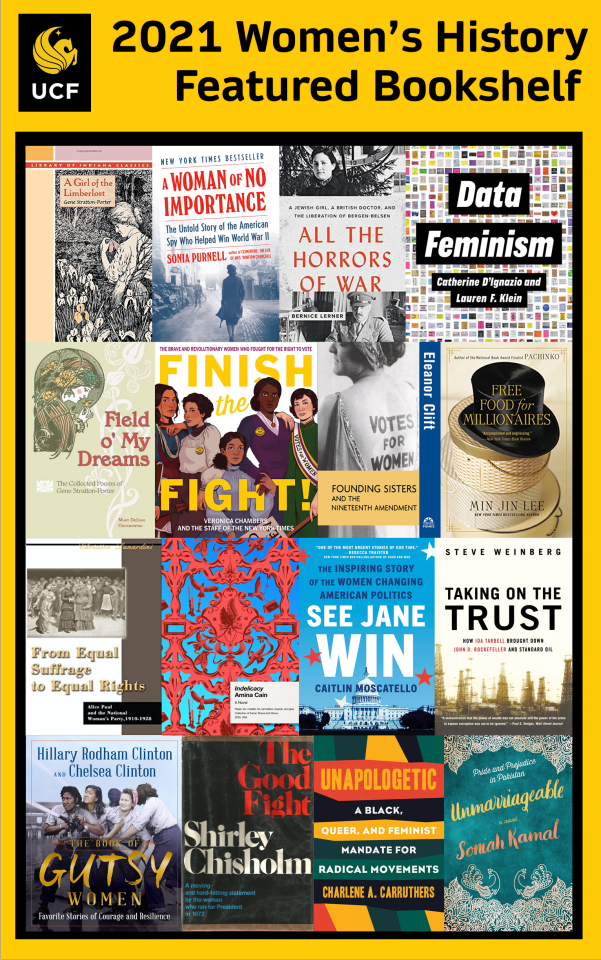
Women’s History Month began as a week-long celebration in Sonoma, California in 1978 which was centered around International Women’s Day on March 8. A year later during a women’s history conference at Sarah Lawrence College, participants learned how successful the week was and decided to initiate similar in their own areas. President Carter issued the first proclamation for a national Women’s History Week in 1980. In 1987, Congress (after being petitioned by the National Women’s History Project) passed Pub. L. 100-9 designating March as Women’s History Month. U.S. Presidents have issued proclamations on Women’s History Month since 1988.
The Libraries will be hosting two virtual events to celebrate Women’s History Month for 2021. The first is a talk by Nicholson School of Communication faculty member, Dr. Kimberly Voss, called “Make No Mistake, Florida is Crucial”: Sen. Lori Wilson and the Equal Rights Amendment, which discusses efforts to ratify the ERA in Florida. The second is a panel discussion called Women & Academia in the Time of COVID where five UCF faculty and administrators will discuss the impact of the COVID pandemic and remote learning on their teaching, scholarship, service loads and personal lives. Both events are free and open to the public. Click on the links to register to attend.
We have created a list of books about women, both history and fiction, suggested by staff. Please click on the read more link below to see the full book list with descriptions and catalog links. And don’t forget to stop by the John C. Hitt Library to browse the featured bookshelf on the main floor near the Research & Information Desk for additional Women’s History Month books.
A Girl of the Limberlost by Gene Stratton Porter Elnora Comstock grows up on the banks of Limberlost Swamp in Indiana with her bitter mother, Katharine. Unable to afford an education, Elnora develops a plan to sell artifacts and moths from the swamp. Suggested by Pat Tiberii, Interlibrary Loan and Document Delivery Services
A Woman of No Importance: the untold story of the American spy who helped win World War II by Sonia Purnell Based on new and extensive research, Sonia Purnell has for the first time uncovered the full secret life of Virginia Hall--an astounding and inspiring story of heroism, spycraft, resistance, and personal triumph over shocking adversity. It is the breathtaking story of how one woman's fierce persistence helped win the war. Suggested by Dawn Tripp, Research & Information Services
All the Horrors of War: a Jewish girl, a British doctor, and the liberation of Bergen-Belsen by Bernice Lerner Drawing on a wealth of sources, including Hughes's papers, war diaries, oral histories, and interviews, this gripping volume combines scholarly research with narrative storytelling in describing the suffering of Nazi victims, the overwhelming presence of death at Bergen-Belsen, and characters who exemplify the human capacity for fortitude. Lerner, Rachel's daughter, has special insight into the torment her mother suffered. The first book to pair the story of a Holocaust victim with that of a liberator, it compels readers to consider the full, complex humanity of both. Suggested by Katie Kirwan, Acquisitions & Collections
Data Feminism by Catherine D'Ignazio and Lauren F. Klein This book offers strategies for data scientists seeking to learn how feminism can help them work toward justice, and for feminists who want to focus their efforts on the growing field of data science. But it is about much more than gender. It is about power, about who has it and who doesn't, and about how those differentials of power can be challenged and changed. Suggested by Sandy Avila, Research & Information Services
Field o' My Dreams: the poetry of Gene Stratton-Porter compiled and edited by Mary DeJong Obuchowski In her introduction to Porter’s work, Obuchowski argues that the natural and spiritual themes of Porter’s poetry mirror the self-same concerns regarding nature and social issues found in her fiction and nonfiction. Reflecting and in some cases reacting against, current social attitudes at a time of political and demographic change, she was in demand as a columnist for popular magazines and a widely read fiction writer. Porter wielded considerable influence over her reading public, and in that role she acted as a reformer, particularly regarding the environment but also on behalf of women, children, and education. Suggested by Pat Tiberii, Interlibrary Loan and Document Delivery Services
Finish the Fight!: the brave and revolutionary women who fought for the right to vote written by the Staff of The New York Times Who was at the forefront of women's right to vote? We know a few famous names, like Susan B. Anthony and Elizabeth Cady Stanton, but what about so many others from diverse backgrounds—black, Asian, Latinx, Native American, and more—who helped lead the fight for suffrage? On the hundredth anniversary of the historic win for women's rights, it's time to celebrate the names and stories of the women whose stories have yet to be told. Suggested by Sandy Avila, Research & Information Services
Founding Sisters and the Nineteenth Amendment by Eleanor Clift In this riveting account, political analyst Eleanor Clift chronicles the many thrilling twists and turns of the suffrage struggle and shows how the issues and arguments that surrounded the movement still reverberate today. Beginning with the Seneca Falls Woman’s Rights Convention of 1848, Clift introduces the movement’s leaders, recounts the marches and demonstrations, and profiles the opposition–antisuffragists, both men and women, who would do anything to stop women from getting the vote. Suggested by Richard Harrison, Research & Information Services
Free Food for Millionaires by Min Jin Lee Casey Han's four years at Princeton gave her many things, "But no job and a number of bad habits." Casey's parents, who live in Queens, are Korean immigrants working in a dry cleaner, desperately trying to hold on to their culture and their identity. Their daughter, on the other hand, has entered into rarified American society via scholarships. But after graduation, Casey sees the reality of having expensive habits without the means to sustain them. As she navigates Manhattan, we see her life and the lives around her, culminating in a portrait of New York City and its world of haves and have-nots. This fresh exploration of the complex layers we inhabit both in society and within ourselves. Suggested by Sara Duff, Acquisitions & Collections
From Equal Suffrage to Equal Rights: Alice Paul and the National Woman's Party, 1910-1928 by Christine A. Lunardini The woman's movements and work in American history during the second two decades, was dramatic. It dealt with the past, with pageants and politics; with different organizations and with conflict from within. It took on the Democrats, founded a National Woman's Party; it waged a home front war. It dealt with prison, and resolution. It went from equal suffrage to equal rights. Suggested by Richard Harrison, Research & Information Services
Indelicacy by Amina Cain A cleaning woman at a museum of art nurtures aspirations to do more than simply dust the paintings around her. She dreams of having the liberty to explore them in writing, and so must find a way to win herself the time and security to use her mind. She escapes her lot by marrying a rich man, but having gained a husband, a house, high society, and a maid, she finds that her new life of privilege is no less constrained. Not only has she taken up different forms of time-consuming labor - social and erotic - but she is now, however passively, forcing other women to clean up after her. Perhaps another and more drastic solution is necessary? Suggested by Sara Duff, Acquisitions & Collections
See Jane Win: the inspiring story of the women changing American politics by Caitlin Moscatello After November 8, 2016, first came the sadness; then came the rage, the activism, and the protests; and, finally, for thousands of women, the next step was to run for office—many of them for the first time. More women campaigned for local or national office in the 2018 election cycle than at any other time in US history, challenging accepted notions about who seeks power and who gets it. Journalist Caitlin Moscatello reported on this wave of female candidates for New York magazine's The Cut, Glamour, and Elle. In this book, she further documents this pivotal time in women's history. Closely following four candidates throughout the entire process, from the decision to run through Election Day, readers are taken inside their exciting, winning campaigns and the sometimes thrilling, sometimes brutal realities of running for office while female. Suggested by Megan Haught, Student Learning & Engagement/Research & Information Services
Taking on the Trust: the epic battle of Ida Tarbell and John D. Rockefeller by Steve Weinberg Long before the rise of mega-corporations like Wal-Mart and Microsoft, Standard Oil controlled the oil industry with a monopolistic force unprecedented in American business history. Undaunted by the ruthless power of its owner, John D. Rockefeller, a fearless and ambitious reporter named Ida Minerva Tarbell confronted the company known simply as “The Trust.” Through her peerless fact gathering and devastating prose, Tarbell, a muckraking reporter at McClure’s magazine, pioneered the new practice of investigative journalism. Her shocking discoveries about Standard Oil and Rockefeller led, inexorably, to a dramatic confrontation during the opening decade of the twentieth century that culminated in the landmark 1911 Supreme Court antitrust decision breaking up the monopolies and forever altering the landscape of modern American industry. Suggested by Dawn Tripp, Research & Information Services
The Book of Gutsy Women: favorite stories of courage and resilience by Hillary Rodham Clinton and Chelsea Clinton Hillary Rodham Clinton and her daughter, Chelsea, share the stories of the gutsy women who have inspired them—women with the courage to stand up to the status quo, ask hard questions, and get the job done. Ensuring the rights and opportunities of women and girls remains a big piece of the unfinished business of the twenty-first century. While there's a lot of work to do, we know that throughout history and around the globe women have overcome the toughest resistance imaginable to win victories that have made progress possible for all of us. That is the achievement of each of the women in this book. To us, they are all gutsy women -- leaders with the courage to stand up to the status quo, ask hard questions, and get the job done. So in the moments when the long haul seems awfully long, we hope you will draw strength from these stories. Because if history shows one thing, it's that the world needs gutsy women. Suggested by Richard Harrison, Research & Information Services
The Good Fight by Shirley Chisholm Chisholm describes being the first woman, and first black woman, to run for President, and how politicians operate. She writes about her relationships with black political leaders Walter Fauntroy, Louis Stokes, Ron Dellums, and Julian Bond. She gives her views on what direction black politics should take in the years to come. Suggested by Megan Haught, Student Learning & Engagement/Research & Information Services
Unapologetic: a Black, queer, and feminist mandate for radical movements by Charlene A. Carruthers Drawing on Black intellectual and grassroots organizing traditions, including the Haitian Revolution, the US civil rights movement, and LGBTQ rights and feminist movements, Carruthers challenges all of us engaged in the social justice struggle to make the movement for Black liberation more radical, more queer, and more feminist. She offers a flexible model of what deeply effective organizing can be, anchored in the Chicago model of activism, which features long-term commitment, cultural sensitivity, creative strategizing, and multiple cross-group alliances. Suggested by Megan Haught, Student Learning & Engagement/Research & Information Services
Unmarriageable by Soniah Kamal In this retelling of Pride and Prejudice set in modern-day Pakistan, Alys Binat has sworn never to marry--until an encounter with one Mr. Darsee at a wedding makes her reconsider. A scandal and vicious rumor in the Binat family have destroyed their fortune and prospects for desirable marriages, but Alys, the second and most practical of the five Binat daughters, has found happiness teaching English literature to schoolgirls. Knowing that many of her students won't make it to graduation before dropping out to marry and start having children, Alys teaches them about Jane Austen and her other literary heroes and hopes to inspire them to dream of more. Suggested by Sara Duff, Acquisitions & Collections
13 notes
·
View notes
Photo

TASMAN SEA (July 11, 2019) USCGC Stratton (WMSL 752), USS Chancellorsville (CG 62), HMAS Melbourne (FFG 05), right, and USS William P. Lawrence (DDG 110) transit in formation as part of exercise Talisman Sabre 2019. A bilateral, biennial event, Talisman Sabre is designed to improve U.S. and Australian combat training, readiness and interoperability through realistic, relevant training necessary to maintain regional security, peace and stability. (U.S. Navy photo by Mass Communication Specialist 3rd Class Isaac Maxwell)
15 notes
·
View notes
Text
2021 Pittsburgh Pirates Roster
Pitchers
#23 Mitch Keller (Cedar Rapids, Iowa)
#30 Kyle Crick (Sherman, Texas)
#31 Tyler Anderson (Las Vegas, Nevada)
#34 J.T. Brubaker (New Carlisle, Ohio)
#35 Trevor Cahill (Vista, California)
#39 Chad Kuhl (Middletown, Delaware)
#43 Steven Brault (El Cajon, California)
#44 Cody Ponce (La Verne, California)
#45 Michael Feliz (Azua, Dominican Republic)
#46 Chris Stratton (Tupelo, Mississippi)
#48 Richard Rodríguez (Santiago, Dominican Republic)
#51 David Bednar (Mars, Pennsylvania)
#52 Clay Holmes (Slocomb, Alabama)
#54 Sam Howard (Cartersville, Georgia)
#56 Duane Underwood; Jr. (Marietta, Georgia)
#57 Luis Oviedo (Barquisimeto, Venezuela)
#62 Blake Cederlind (Turlock, California)
#72 José Soriano (Santo Domingo, Dominican Republic)
#75 Austin Davis (Scottsdale, Arizona)
Catchers
#5 Michael Pérez (Cataño, Puerto Rico)
#58 Jacob Stallings (Lawrence, Kansas)
Infielders
#2 Erik González (Puerto Plata, Dominican Republic)
#13 Ke’Bryan Hayes (Tomball, Texas)
#15 Wilmer Difo (Santiago De Los Caballeros, Dominican Republic)
#19 Colin Moran (New Rochelle, New York)
#24 Phillip Evans (Carlsbad, California)
#26 Adam Frazier (Watkinsville, Georgia)
#27 Kevin Newman (Poway, California)
Outfielders
#6 Anthony Alford (Petal, Mississippi)
#10 Bryan Reynolds (Brentwood, Tennessee)
#25 Gregory Polanco (Villa Mella, Dominican Republic)
#49 Dustin Fowler (Dexter, Georgia)
Coaches
Manager Derek Shelton (Carbondale, Illinois)
Bench coach Don Kelly (Mt. Lebanon, Pennsylvania)
1st base coach Tarrik Brock (Goleta, California)
3rd base coach José Cora (Caguas, Puerto Rico)
Hitting coach Rick Eckstein (Sanford, Florida)
Assistant hitting coach Christian Marrero (Miami, Florida)
Pitching coach Oscar Marin (Los Angeles, California)
Bullpen coach Justin Meccage (Billings, Montana)
Bullpen catcher Jordan Comadena (Normal, Illinois)
Catching coach Glenn Sherlock (Nahant, Massachusetts)
Field coordinator Mike Rabelo (New Pt. Richey, Florida)
Coaching assistant Jose Andrade (Caracas, Venezuela)
#Sports#Baseball#MLB#Pittsburgh Pirates#Celebrities#Nevada#Ohio#Iowa#Delaware#Pennsylvania#Texas#Dominican Republic#Alabama#Georgia#Venezuela#Mississippi#Arizona#Puerto Rico#Kansas#New York#Tennessee#Illinois#Florida#Montana#Massachusetts
1 note
·
View note
Photo
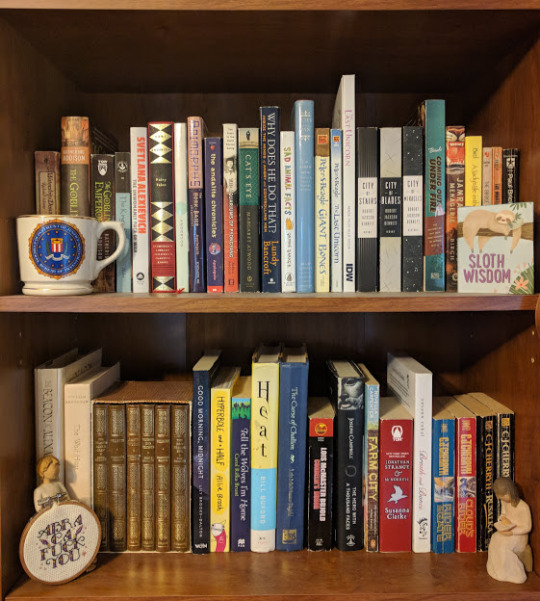
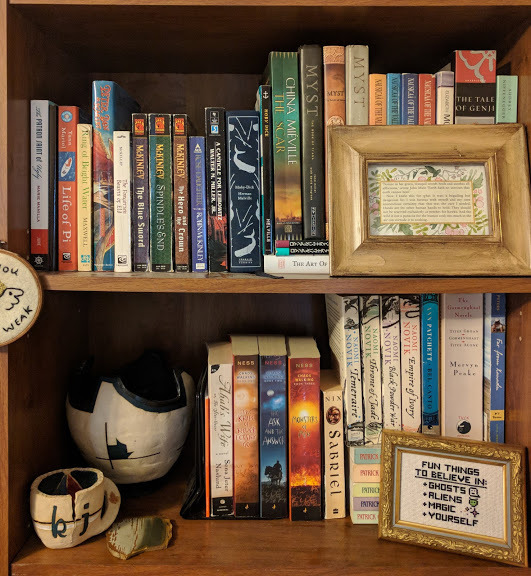

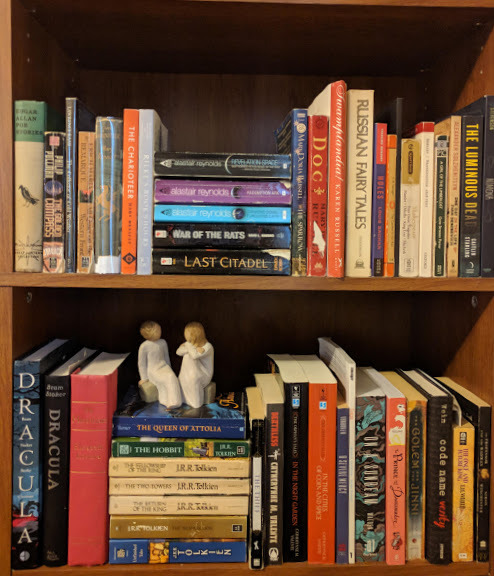
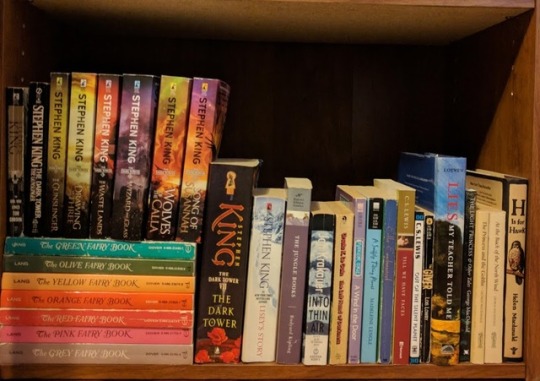

My current bookshelves, more or less in the actual order they appear! Deets below the cut. ( I really want to know what people believe about me based on what’s on these shelves...)
Top Left:
Richard Adams: Watership Down
Katherine Addison: The Goblin Emperor x2 (1 copy is signed)
Elizabeth Alder: The King’s Shadow
Svetlana Alexievich: The Unwomanly Face Of War
Hans Christian Andersen: Fairy Tales
Laurie Halse Anderson: Speak
K.A. Applegate: Animorphs: The Hork-Bajir Chronicles, Animorphs: The Andalite Chronicles
Kang Chol-hwan: The Aquariums Of Pyongyang
Margaret Atwood: Cat’s Eye
Lundy Bancroft: Why Does He Do That? Inside The Minds Of Angry And Controlling Men
Brooke Barker: Sad Animal Facts
J.M. Barrie: Peter Pan (illustrated by Trina Schart Hyman)
Peter S. Beagle: Giant Bones, The Last Unicorn x2 (1 copy illustrated by Peter B. Gillis)
Robert Jackson Bennet: City Of Stairs, City Of Blades, City Of Miracles
Allan Bérubé : Coming Out Under Fire: The History Of Gay Men And Women In World War II
Carol Birch: Jamrach’s Menagerie
Isabella Bird: A Lady’s Life In The Rocky Mountains
Pierre Boulle: The Bridge Over The River Kwai
Ray Bradbury: The Martian Chronicles
Paul Brickhill: The Great Escape
Bonus: my grandpa’s mug from the FBI, a picture book of sloth wisdom
Second Left:
Gillian Bradshaw: The Beacon At Alexandria, The Wolf Hunt
Assorted Brontës: The Tenant Of Wildfell Hall, Agnes Grey, Villette, Jane Eyre, Wuthering Heights, Shirley, The Professor
Lily Brooks-Dalton: Good Morning, Midnight
Allie Brosch: Hyperbole And A Half
Carol Rifka Brunt: Tell The Wolves I’m Home
Bill Buford: Heat
Lois McMaster Bujold: The Curse Of Chalion, Cordelia’s Honor
Joseph Campbell: The Hero With A Thousand Faces
Novella Carpenter: Farm City
Susanna Clarke: Jonathan Strange And Mr. Norrell
Susann Cokal: Breath And Bones
C.J. Cherryh: Rider At The Gate, Cloud’s Rider, Rusalka, Chernovog
Bonus: two Willow Tree figures and my ABRA-CA-FUCK-YOU cross-stitch
Third Left:
C.J. Cherryh: Alternate Realities, Foreigner, Invader, Inheritor, Precursor, Defender, Explorer
Henry Chancellor: Colditz: The Definitive Story
Evan Dahm: Rice Boy
Ellen Datlow & Terri Windling: The Year’s Best Fantasy And Horror (#16)
Tiffany DeBartolo: How To Kill A Rock Star
Gavin DeBecker: The Gift Of Fear
Tom DeHaven: Sunburn Lake
Charles DeLint: Dreams Underfoot
Seth Dickinson: The Traitor Baru Cormorant
Carole Nelson Douglas: Exiles Of The Rynth
Arthur Conan Doyle: The Lost World
Brendan Duffy: House Of Echoes
William Faulkner: The Sound And The Fury, Flags In The Dust, Selected Short Stories
Elizabeth Warnock Fernea: Guests Of The Sheik
M.K. Fisher: How To Cook A Wolf
Fannie Flagg: Fried Green Tomatoes At The Whistle Stop Cafe
Fourth Left:
James Gurney: Dinotopia
Gillian Flynn: Sharp Objects
Anker Frankoni: Mexican Eskimo
Charles Frazier: Cold Mountain
Nancy Garden: Annie On My Mind
Maeve Gilmore: A World Away
William Goldman: The Princess Bride
Nicola Griffith: Ammonite
Marie Haskell: The Princess Curse
Frank Herbert: Dune
Victor Hugo: Les Miserables
Shirley Jackson: We Have Always Lived In The Castle
Mira Jacob: The Sleepwalker’s Guide To Dancing
Paulette Jiles: Enemy Woman
Susan Kay: Phantom
Brian Jacques: Martin The Warrior, Mossflower, The Outcast Of Redwall, Mariel Of Redwall, Pearls Of Lutra, Salamandastron
Stephen King: Duma Key, Rose Madder, Hearts In Atlantis
Bottom Left:
Stephen King: The Girl Who Loved Tom Gordon, The Gunslinger x2, The Drawing Of The Three, The Waste Lands, Wizard And Glass, Wolves Of The Calla, Song Of Susannah, The Dark Tower, Lisey’s Story
Andrew Lang: The Green-, Olive-, Yellow-, Orange-, Red-, Pink-, and Grey Fairy Books
Rudyard Kipling: The Jungle Books
Jon Krakauer: Into Thin Air
Ursula K. LeGuin: The Left Hand Of Darkness
Madeline L’Engle: A Wind In The Door, A Swiftly Tilting Planet
Gail Carson Levine: Ella Enchanted
C.S. Lewis: Til We Have Faces, Out Of The Silent Planet
Lois Lowry: The Giver
James W. Loewen: Lies My Teacher Told Me: Everything Your American History Textbook Got Wrong
George MacDonald: The Light Princess & Other Stories, The Princess And The Goblin, At The Back Of The North Wind
Helen MacDonald: H Is For Hawk
Top Right:
Marie Manilla: The Patron Saint Of Ugly
Yann Martel: Life Of Pi
Gavin Maxwell: Ring Of Bright Water
Bernadette McCaughrean: Peter Pan In Scarlet
Patricia McKillip: The Forgotten Beasts Of Eld
Robin McKinley: The Hero And The Crown, The Blue Sword, Spindle’s End, Rose Daughter
Water M. Miller Jr.: A Canticle For Leibowitz
Herman Melville: Moby Dick x2 (1 copy is abridged and illustrated for children)
China Miéville: The Scar
Rand Miller: Myst: The Book Of Ti’Ana, Myst: The Book Of Atrus, Myst: The Book Of D’Ni
Hayao Miyazaki: Nausicaa Of The Valley Of The Wind, The Art Of Nausicaa, The Art Of Castle In The Sky
Elizabeth Moon: Remnant Population
Lady Murasaki: The Tale Of Genji
Audrey Nieffenegger: The Time-Traveler’s Wife
Bonus: “but you are not weak” embroidery, hand-painted page from H Is For Hawk
Second Right:
Sena Jeter Naslund: Ahab’s Wife: Or, The Star-Gazer
Patrick Ness: The Knife Of Never Letting Go, The Ask And The Answer, Monsters Of Men
Garth Nix: Sabriel
Naomi Novik: Temeraire, Throne Of Jade, Black Powder War, Empire Of Ivory
Ann Patchett: Bel Canto
Mervyn Peake: Gormenghast
Julie Ann Peters: Far From Xanadu
Patrick O’Brian: Master And Commander, Post Captain, HMS Surprise, The Mauritius Command, Desolation Island, The Fortune Of War, The Far Side Of The World
Bonus: pottery my dead friend made, pottery I made, slab of picture jasper, my “Fun Things To Believe In” cross-stitch
Third Right:
Edgar Allen Poe: Stories
Phillip Pullman: The Golden Compass
Lawrence Raab: The Collector Of Cold Weather
Erich Marie Remarque: All Quiet On The Western Front
Mary Renault: The Charioteer x2 (1 first edition)
Alistair Reynolds: Revelation Space, Redemption Ark, Diamond Dogs, Turquoise Days
David L. Robbins: War Of The Rats, The End Of War, Last Citadel
Mary Doria Russell: The Sparrow, Doc
Karen Russell: Swamplandia!
Alexander Afanasyev: Russian Fairy Tales
Louis Sachar: Holes
J.D. Salinger: The Catcher In The Rye
Sarah N.B.: It Begins In A Garden
William Shakespeare: Hamlet, Othello, King Lear, Macbeth
Mary Shelley: Frankenstein
Gene Stratton Porter: A Girl Of The Limberlost
Alexander Solzhenitsyn: One Day In The Life Of Ivan Denisovich
Caitlin Starling: The Luminous Dead
Noelle Stevenson: Nimona
Fourth Right:
Bram Stoker: Dracula x2 (1 illustrated by Becky Cloonan)
Elizabeth Kostova: The Historian
J.R.R. Tolkien: The Hobbit, The Fellowship Of The Ring, The Two Towers (x2), The Return Of The King, The Silmarillion, Unfinished Tales
Elizabeth Whalen Turner: The Thief, The Queen Of Attolia
Catherynne M. Valente: Deathless, The Orphan’s Tales: In the Night Garden, The Orphan’s Tales: In The Cities Of Coin And Spice
Sheldon Vanauken: A Severe Mercy
Brian K. Vaughn: Saga (#1)
Tillie Walden: On A Sunbeam
Jen Wang: The Prince And The Dressmaker
Helene Wecker: The Golem And The Jinni
Elizabeth Wein: Code Name Verity
T.H. White: The Once And Future King
Simon Winchester: The Professor And The Madman
Bottom Right:
Gary Trudeau: The Doonesbury Chronicles
Adam Edgerton: Rediscovering Adak
Walt Whitman: Leaves Of Grass
Jane Yolen: Twelve Impossible Things Before Breakfast
Daniel Woodrell: Winter’s Bone
Patricia C. Wrede: Dealing With Dragons, Calling On Dragons, Searching For Dragons
Malcolm York: Mervyn Peake: My Eyes Mint Gold
Bonus: assorted DVDs and 1 lonely VHS tape, any manga I didn’t purge, plus some children’s books and self-published comics by high school friends
#books books books#the misc bits used to be more evenly distributed across all shelves but story has started to go mountain climbing#so the lower shelves are 'faced' to the edge of the shelf now#it's... not helping that much
21 notes
·
View notes
Quote
Who Is a Continental Philosopher? 5 APRIL 2011 / DAVID AUERBACH / 1 COMMENT In the debate over continental philosophy a few posts back, there was some question as to which philosophers fell under the rubric of continental philosophy. In the eyes of many observers, indeed, a certain strain of French thought has come to stand for the entire field. Both positive and negative attention have been focused around Derrida, Lacan, Foucault, etc., to the exclusion of many, many others. So I was glancing through the Blackwell Companion to Continental Philosophy (1998) on Google Books tonight, edited by Levinas evangelist and Leiter nemesis Simon Critchley. Even Critchley and co-editor William Schroeder relegate that French strain to just one corner of a large tradition, and most of the names are far less contentious. Rather than trying to answer what continental philosophy is, I think it’s better just to look at these names to get a sense of what the field encompasses. Part I: The Kantian Legacy:. 1. The Context and Problematic of Post Kantian Philosophy: Frederick C. Beiser (University of Indiana, Bloomington). 2. Kant: Robert B. Pippin (University of Chicago). 3. Fichte: Ludwig Siep (Universitat Munster). 4. Early German Romanticism: Friedrich Schlegel and Novalis: Ernst Behler (University of Washington, Seattle). 5. Schelling: Jean Francois Courtine (Ecole Normale Superieure, Paris). 6. Hegel: Stephen Houlgate (University of Warwick). Part II: Overturning The Tradition: . 7. Feuerbach and the Young Hegelians: Lawrence S. Stepelevich (Villanova University). 8. Marx: Michel Henry (University of Montpellier III). 9. Kierkegaard: Merold Westphal (Fordham University). 10. Schopenhauer: Robert Rethy (Xavier University). 11. Nietzsche: Charles E. Scott (Pennsylvania State University). 12. Freud: John Deigh (Northwestern University). 13. Bergson: Pete A. Y. Gunter (North Texas State University). Part III: The Phenomenological Breakthrough:. 14. Neo Kantianism: Steven Galt Crowell (Rice University). 15. Husserl: Rudolf Bernet (Louvain Catholic University). 16. Scheler: Manfred S. Frings (The Max Scheler Archives, Des Plaimes). 17. Jaspers: Kurt Salamun (University of Graz). 18. Heidegger: John D. Caputo (Villanova University). Part IV: Phenomenology, Hegelianism and Anti Hegelianism in France:. 19. Kojeve: Stanley Rosen (Boston University). 20. Levinas: Hent De Vries (University of Amsterdam). 21. Sartre: Thomas R. Flynn (Emory University). 22. De Beauvoir: Kate Fullbrook (University of the West of England) and Edward Fullbrook (freelance writer). 23. Merleau Ponty: Bernhard Waldenfelds (Ruhr Universitat Bochum). 24. Bataille: Robert Sasso (University of Nice). 25. Blanchot: Paul Davies (University of Sussex). Part V: Religion Without The Limits of Reason:. 26. Franz Rosenzweig: Paul Mendes Flohr (Hebrew University). 27. Martin Buber: Maurice Friedman (San Diego State University). 28. Marcel: Philip Stratton Lake (Keele University). Part VI: Three Generations of Critical Theory:. 29. Benjamin: Rebecca Comay (University of Toronto). 30. Horkheimer: Gunzelin Schmidt Noerr (Frankfurt am Main). 31. Adorno: Hauke Brunkhorst (Frankfurt am Main). 32. Bloch: Hans Dieter Bahr (University of Vienna). 33. Marcuse: Douglas Kellner (University of Texas at Austin). 34. Habermas: Thomas McCarthy (Northwestern University). 35. Third Generation Critical Theory: Max Pensky. (SUNY, Binghampton). Part VII: Hermeneutics:. 36. Schleiermacher: Ben Vedder (University of Tilburg). 37. Dilthey: Rudolf A. Makkreel (Emory University). 38. Gadamer: Dennis J. Schmidt (Villanova University). 39. Ricoeur: Richard Kearney (University College, Dublin). Part VIII: Continental Political Philosophy:. 40. Lukacs: Gyorgy Markus (University of Sydney). 41. Gramsci: Ernesto Laclau (University of Essex). 42. Schmitt: G. L. Ulmen (Telos Press Ltd). 43. Arendt: Robert Bernasconi (Memphis State University). 44. Lefort: Bernard Flynn (Empire State College, SUNY). 45. Castoriadis: Fabio Ciaramelli (University of Naples). Part IX: Structuralism and After: 46. Levi-Strauss: Marcel Henaff (UCSD, California). 47. Lacan: William J. Richardson (Boston College). 48. Althusser: Jacques Ranciere (University of Paris VIII). 49. Foucault: Paul Patton (University of Sydney). 50. Derrida: Geoffrey Bennington (University of Sussex). 51. Deleuze: Brian Massumi (McGill University). 52. Lyotard: Jacob Rogozinski (University of Paris VIII). 53. Baudrillard: Mike Gane (Loughborough University). 54. Irigaray: Tina Chanter (Memphis State University). 55. Kristeva: Kelly Oliver (University of Texas at Austin). 56. Le Doeuff: Moira Gatens (University of Sydney). A reasonable list. It definitely has a French bias, but it’s not too bad. If compiled today, it would probably include Agamben, Badiou, and Negri too. The unforgivable omission is Ernst Cassirer, who is only mentioned twice in the Neo-Kantianism article and once in passing by Beiser (whose work I very much like). Schlegel, Schiller, Saussure, Bourdieu, and Barthes also seem rather important. Given the inclusion of a bunch of cultural and sociological thinkers, sociologists Max Weber, Emile Durkheim, and Georg Simmel should definitely be on this list. Other worthy omissions: Humboldt, Brentano, Croce, Mauss, Lowith, Valery, Fanon, Bachelard, Blumenberg, Apel, Eco, Bouveresse, and Virilio. (Not that I like all of them.)
3 notes
·
View notes
Text




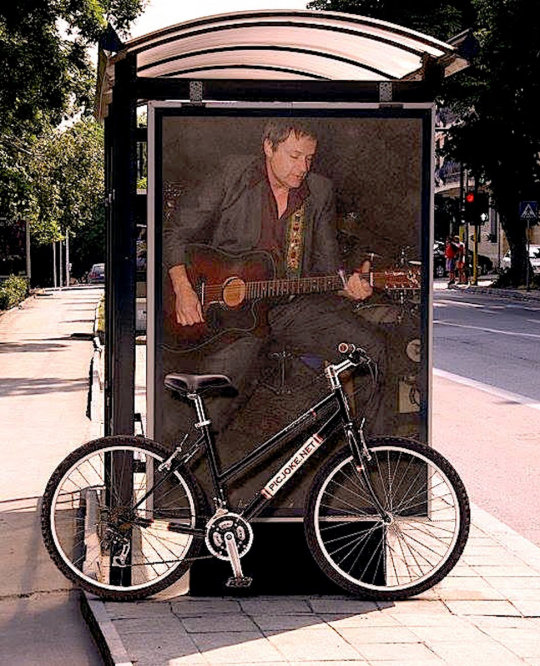
HAPPY BIRTHDAY to pedal steel guitarist Joe Alterio, composer John Antes, Dave Appell, Roscoe Arbuckle, J.S. Bach’s BRANDENBURG CONCERTOS (1721), Joseph Barbera, the 1980 Beatles RARITIES LP, Beethoven’s MISSA SOLEMNIS (1824), Laura Flynn Boyle, Sharon Corr, Don Covay, Fanny Crosby “Queen of Gospel Songwriters,” Klaus Dinger (Kraftwerk), Lawrence Ferlinghetti, Gorgeous George, the 1988 musical GOSPEL AT COLONUS, civil rights activist Dorothy Height, Connie Hines (Mr. Ed), Patterson Hood (Drive By Truckers), Harry Houdini, Yanks Janis, Carol Kaye, Mike Kellie (Spooky Tooth), Krisdayanti, Kelly LeBrock, Pacemaster Mase (De La Soul), Steve McQueen (got that song waiting for you), Malcolm Muggeridge, Nivea, Lee Oskar, Paradox Thought, Joseph Priestley, cellist Hank Roberts, Klavdiya Shulzhenko, Billy Stewart, Dorothy Stratton, Sylvester the Cat, Dougie Thompson (Supertramp), Fred Vail, Boogie Bill Webb, Tommy Wilson, and the great singer-songwriter, producer, and entertainer Nick Lowe. If you collected all the recordings he’s produced, played on, and/or wrote songs for (plus the cover versions), you’d have an amazing, well-rounded record library par excellente. He’s intersected with Johnny Cash, Elvis Costello, Dave Edmunds, and a galaxy of other notables. Seeing him with Rockpile (twice) left an indelible impression on me in terms of stage presence and entertainment value. When his PURE POP FOR NOW PEOPLE LP came out, it became required listening in my social circle. I read that Nick never does live performances of his song “I Love the Sound of Breaking Glass” (allegedly a comeback to a Blondie song). So here’s my take of it, live at the Cellblock (opening for The Badlees). Meanwhile, HB Nick!
https://johnnyjblairsingeratlarge.bandcamp.com/track/i-love-the-sound-of-breaking-glass-live-7-4-03
#nicklowe #breakingglass #johnnyjblair #singeratlarge #thebadlees #cellblock #williamsportPA #concert #soloacoustic #blondie #elviscostello #johnnycash #daveedmunds #rockpile
#Nick Lowe#Breaking Glass#johnny j blair#singer songwriter#singer at large#music#san francisco#pop rock#The Badlees#Dave Edmunds#Deborah Harry#Blondie#Williamsport#Pennsylvania#Cell Block#rockpile
2 notes
·
View notes
Text
Quantum Leap - Season Three Review
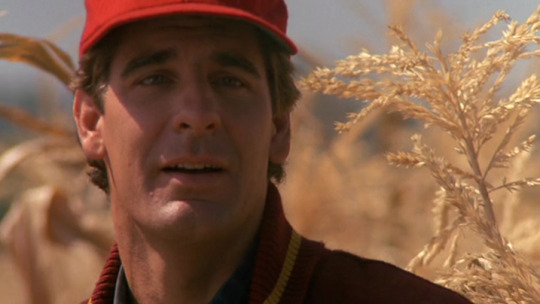
"I always do the right thing, Al. And where does it get me?"
Season three is when the formula started to wear thin a bit... and I got a little tired of "Oh, boy," even though Scott Bakula valiantly did his level best to make it sound different every single time. Al hitting his hand link also got a little old. It was also pretty obvious by this point that God has a sick sense of humor. The way Sam is dumped into ridiculous and/or dangerous situations with no knowledge of what is going on is like an ongoing practical joke. Why would God leap Sam into a magic box being pierced by swords, or just in time to sprinkle talc on a naked guy's underwear?
What works
Just like season two, the best episodes of season three are the premiere and the finale. In fact, the premiere is considered to be the best episode of the series, because Sam finally got to leap home. Sort of.
3.1 "The Leap Home, Part 1 (November 25, 1969)": How many of us would give nearly everything for a chance to go back in time and fix what went wrong in our own lives? It's tragic that when Sam leaped into himself at sixteen, he longed to save everyone in his family, but had to face the fact that it was not what God sent him there to do.
In a way, "The Leap Home" paralleled "M.I.A.", where Al refused to believe Ziggy's projections because he wanted the leap to be about saving his marriage to Beth. Here, Sam also refused to believe what Al was telling him because he was certain he was there to save his brother from dying in Vietnam, his father from dying of lung cancer, and even that he could keep his little sister Katie from ruining her life by marrying an abusive man. It's so easy for the audience to put themselves in Sam's shoes. I confess that I've often fantasized about going back in time somehow so that I could find a way to save my sister's life.
But no, you really can't go home again. With the possible exception of Al dancing with Beth in "M.I.A.," "The Leap Home" gave us the strongest scene in the series as Sam told his little sister Katie the truth about time travel and the bad stuff that was coming, and tried to prove it by singing his favorite song that hadn't been written yet. (A beautiful vocal by Scott Bakula, and by the way, "Imagine" is, coincidentally, my favorite song of all time, too.) Katie's face as she slowly realized that she'd never heard the song before and that it meant their brother Tom would die was genuinely heartbreaking, and Sam was forced to say that he was making it all up. This scene was made even more poignant, if that's possible, by Al almost wordlessly telling Sam not to share with Katie what happened to John Lennon. Honestly, I'm dripping tears just writing about it.

In the scenes that followed, Sam for the first time expressed his anger at what God was forcing him to do, to save other people but not the people that Sam himself loved. Al, who had also lost his chance to fix his life with time travel, was the one to remind Sam that God also gave him an amazing gift: the chance to spend Thanksgiving with his family one more time.
Scott Bakula played both Sam and Sam's father. That was okay, but it felt too much like a gimmick. I wonder if maybe some of the scenes might have worked better if I hadn't been distracted by Bakula playing two roles?
That's a nitpick, though. This is an excellent, emotionally resonant episode.
3.2 "The Leap Home, Part 2 (April 7, 1970)": Part two was also terrific. It felt like God was rewarding Sam for his sacrifice in part one by allowing him to save Tom's life. Andrea Thompson (Babylon 5) gave a good performance as dynamic reporter Maggie Dawson, who died for her Pulitzer. It made me think about whether or not it would be worth dying to create something that would live forever.
But I was unhappy that the unsuccessful mission was all about rescuing Al from his POW prison back in 1970. It felt like the writers were rubbing in the fact that Sam and Al couldn't use time travel to change their own lives... except that Sam actually could, this time. Why was Sam rewarded but Al punished? (Maybe I'm taking this too personally.)
3.6 "Miss Deep South (June 7, 1958)": I dislike pretty much everything about beauty pageants, but couldn't help loving this episode. Maybe I really liked the feminist slant, that Sam had to perform well in the pageant so that the young woman he'd leaped into could become a doctor and save a whole lot of lives — or maybe it was that he was also there to save another young woman from making an epically bad choice in life, like his sister Katie.
Okay, okay, it was probably Scott Bakula singing "Great Balls of Fire" while dressed like Carmen Miranda.
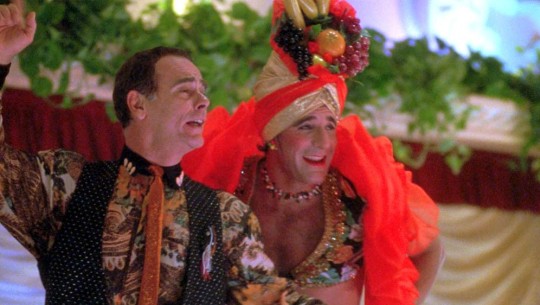
3.12 "8 1/2 Months (November 15, 1955)": Another excellent episode where Scott Bakula played a woman, this time an unmarried, pregnant sixteen-year-old girl. I particularly liked the emphasis on how helpless an underage pregnant girl was and how few choices she had back in the fifties. I also want to mention again what a strong actor Scott Bakula is. He's a masculine-looking guy, but he can wear women's clothing, even flowery maternity clothes, and I'm still focused on his performance instead of what he's wearing.

3.13 "Future Boy (October 6, 1957)": Sam leaped in to help Moe, the star of a children's TV show about time travel. Moe constructed a faux time machine in his own basement, and his adult daughter Irene believed that Moe was losing his marbles and wanted to have him committed. Touchingly, Moe built the machine because what he wanted more than anything was to go back in time and be a better husband and father. I don't know whether or not it was intentional, but there was some ambiguity in this Moe situation, since it was pretty clear to me that Moe really had lost touch with reality and should have been hospitalized. But it was still touching that Sam was able to bring Moe and Irene back together as family.
3.22 "Shock Theater (October 3, 1954)": As I've mentioned before, many Quantum Leap episodes feel like homages to specific movies. Here, it was One Flew Over the Cuckoo's Nest, as Sam was subjected to shock treatment against his will, which made him dissociate into various personalities. The best part was that all of those personalities were the real people that Sam leaped into, and that this time, Sam wasn't faking it -- he actually was his leapees: Tom Stratton, Jesse Tyler, Samantha Stormer, Jimmy, Kid Cody.
Nearly every episode of Quantum Leap puts Sam in some sort of danger, but we usually feel that he'll be okay in the end. In this one, it felt like things were spiraling out of control as Sam suffered abuse and was in genuine peril. In the end, Sam was forced to ask for the shock treatment that he dreaded, and he and Al somehow wound up leaping together, leaving us with a pretty serious and unusual cliffhanger.
Okay, there were a couple of problems with this one. Al rapping to teach Scott Lawrence's character to read made me uncomfortable. It was also hard not to wonder what happened to Sam's unfortunate leapee after the treatment, and how unfair that whole thing was to him.
Honorable mention
3.17 "Glitter Rock (April 12, 1974)": It's always fun when an episode features Scott Bakula singing, and for some reason, I absolutely loved the technicolor pseudo-Kiss makeup. But what the hell was Al wearing? A decorative stop sign? Wouldn't that be dangerous if he were walking down a road somewhere?

3.18 "A Hunting Will We Go (June 18, 1976)": It's hard to pull off this much slapstick in a single episode and do it well, but I thought they did: this episode was pretty darned funny. Good job by Scott Bakula as well as Jane Sibbett, who gave a vibrant performance; I always saw her as David Schwimmer's bland ex-wife on Friends, and didn't realize she was capable of stuff like this. I also appreciated the homage to the famous Clark Gable/Claudette Colbert hitchhiking scene from It Happened One Night.
What doesn't work
There are a few weak episodes, but this one's awfulness stood out from the crowd:
3.5 "The Boogieman (October 31, 1964)": This truly idiotic and poorly written episode is about a dream Sam had, while unconscious, of mysterious murders at a Halloween spook house. It included a replica of Al as the devil trying to stop Sam from fixing things while leaping — possibly Dean Stockwell's poorest performance of the series — and a teenage Stephen King with his dog Cujo.
Bits and pieces:
-- Famous people: Jack Kerouac, and as mentioned above, Stephen King.
-- Notable actors: C.C.H. Pounder, Kurt Fuller, and Peter Noone from Herman's Hermits. And Olivia Burnett, who did such a terrific job playing Sam's little sister Katie, also played another little girl named Susan in season two's "Another Mother."
-- Here's a question for those of you better at this online app stuff. Is Quantum Leap available for free at nbc.com (with commercials)? If it is, what did they do about the music replacement issue?
To conclude
I thought season three was good, but not quite as good as season two. And in fact, rewatching season three drove home for me that as a series, Quantum Leap was episodic, not serial. Honestly, I'd forgotten. But as my mother used to say, it is what it is.
On to season four.
Billie Doux loves good television and spends way too much time writing about it.
#Quantum Leap#Sam Beckett#Al Calavicci#Scott Bakula#Dean Stockwell#Quantum Leap Reviews#Doux Reviews#TV Reviews#something from the archive
15 notes
·
View notes
Text
A list of all films featured in 2019′s 31 Days of Oscar
This is the exhaustive list of all 388 short- and feature-length films featured during this year’s 31 Days of Oscar marathon (up from 296 last year). Best Picture winners and the one (and only) winner for Unique and Artistic Production are in bold. Asterisked (*) films are films I haven’t seen in their entirety as of the publishing of this post.
Sunrise: A Song of Two Humans (1927)
Two Arabian Knights (1927)*
The Crowd (1928)
Sadie Thompson (1928)*
Speedy (1928)
Street Angel (1928)
A Woman of Affairs (1928)
White Shadows in the South Seas (1928)*
The Broadway Melody (1929)
The Divine Lady (1929)*
Weary River (1929)*
All Quiet on the Western Front (1930)
The Big House (1930)
The Doorway to Hell (1930)*
Flight Commander (1930)*
The Criminal Code (1931)*
Little Caesar (1931)
The Public Enemy (1931)
Flowers and Trees (1932 short)
Grand Hotel (1932)
What Price Hollywood? (1932)*
42nd Street (1933)
Gold Diggers of 1933 (1933)
Morning Glory (1933)*
The Private Life of Henry VIII (1933)*
Cleopatra (1934)*
Imitation of Life (1934)
It Happened One Night (1934)
Manhattan Melodrama (1934)*
The Thin Man (1934)
Alice Adams (1935)*
Captain Blood (1935)
A Midsummer Night’s Dream (1935)*
Top Hat (1935)
Dodsworth (1936)
Fury (1936)*
The Great Ziegfeld (1936)
Libeled Lady (1936)
Mr. Deeds Goes to Town (1936)
Captains Courageous (1937)
Night Must Fall (1937)*
The Prisoner of Zenda (1937)
A Star Is Born (1937)
Way Out West (1937)*
The Adventures of Robin Hood (1938)
Boys Town (1938)
Merrily We Live (1938)*
Pygmalion (1938)
You Can’t Take It with You (1938)
Beau Geste (1939)
Dark Victory (1939)
Gone with the Wind (1939)
Goodbye, Mr. Chips (1939)
Gulliver’s Travels (1939)
Lady of the Tropics (1939)*
Mr. Smith Goes to Washington (1939)
Ninotchka (1939)
Only Angels Have Wings (1939)*
Stagecoach (1939)
The Wizard of Oz (1939)
Wuthering Heights (1939)*
Young Mr. Lincoln (1939)
The Great McGinty (1940)
The Mark of Zorro (1940)
Night Train to Munich (1940)*
Our Town (1940)
The Philadelphia Story (1940)
Rebecca (1940)
Strike Up the Band (1940)
The Thief of Bagdad (1940)
Waterloo Bridge (1940)
Dumbo (1941)
Here Comes Mr. Jordan (1941)
Suspicion (1941)
Bambi (1942)
Casablanca (1942)
Johnny Eager (1942)*
Kings Row (1942)*
The Magnificent Ambersons (1942)
Mrs. Miniver (1942)
Now, Voyager (1942)
Random Harvest (1942)
To Be or Not to Be (1942)
Yankee Doodle Dandy (1942)
The Desert Song (1943)*
The Human Comedy (1943)*
Lassie Come Home (1943)
The Ox-Bow Incident (1943)
The Song of Bernadette (1943)
Henry V (1944)*
Lifeboat (1944)
National Velvet (1944)
Anchors Aweigh (1945)
Blithe Spirit (1945)*
Brief Encounter (1945)
The Lost Weekend (1945)
They Were Expendable (1945)*
The Best Years of Our Lives (1946)
The Harvey Girls (1946)
It’s a Wonderful Life (1946)
The Stranger (1946)*
First Steps (1947)*
Forever Amber (1947)*
Life with Father (1947)*
The Perils of Pauline (1947)*
Bicycle Thieves (1948, Italy)
Hamlet (1948)
The Naked City (1948)
The Red Shoes (1948)
I Remember Mama (1948)
Romance on the High Seas (1948)*
Adam’s Rib (1949)*
Battleground (1949)
The Heiress (1949)
A Letter to Three Wives (1949)*
Mighty Joe Young (1949)*
On the Town (1949)
She Wore a Yellow Ribbon (1949)
The Stratton Story (1949)*
The Third Man (1949)
White Heat (1949)
All About Eve (1950)
Broken Arrow (1950)*
Destination Moon (1950)*
Mystery Street (1950)*
Rashômon (1950, Japan)
An American in Paris (1951)
Royal Wedding (1951)
Show Boat (1951)*
Strangers on a Train (1951)
High Noon (1952)
The Quiet Man (1952)
Umberto D. (1952, Italy)
The Band Wagon (1953)
The 5,000 Fingers of Dr. T (1953)*
From Here to Eternity (1953)
Julius Caesar (1953)*
Lili (1953)
Little Fugitive (1953)*
Little Johnny Jet (1953 short)*
Titanic (1953)*
Brigadoon (1954)
La Strada (1954, Italy)
On the Waterfront (1954)
Seven Brides for Seven Brothers (1954)
Seven Samurai (1954, Japan)
A Star Is Born (1954)
Blackboard Jungle (1955)
It’s Always Fair Weather (1955)
Marty (1955)
Speedy Gonzales (1955 short)
To Catch a Thief (1955)
Around the World in 80 Days (1956)
The Bespoke Overcoat (1956 short)*
Forbidden Planet (1956)
Lust for Life (1956)
Somebody Up There Likes Me (1956)*
The Bridge on the River Kwai (1957)
Funny Face (1957)
Gunfight at the O.K. Corral (1957)
12 Angry Men (1957)
The Defiant Ones (1958)
Gigi (1958)
Mon Oncle (1958, France)
The Young Lions (1958)*
Ben-Hur (1959)
South Pacific (1958)
The 400 Blows (1959, France)
North by Northwest (1959)
Inherit the Wind (1960)
Macario (1960, Mexico)*
The Time Machine (1960)
Breakfast at Tiffany’s (1961)
The Children’s Hour (1961)*
Judgment at Nuremberg (1961)
Through a Glass Darkly (1961, Sweden)*
West Side Story (1961)
Days of Wine and Roses (1962)
How the West Was Won (1962)
Lawrence of Arabia (1962)
The Longest Day (1962)
The Miracle Worker (1962)
To Kill a Mockingbird (1962)
What Ever Happened to Baby Jane? (1962)
Bye Bye Birdie (1963)
Charade (1963)
Cleopatra (1963)
The Leopard (1963, Italy)
Tom Jones (1963)*
Yesterday, Today and Tomorrow (1963, Italy)*
A Hard Day’s Night (1964)
Mary Poppins (1964)
My Fair Lady (1964)
The Pink Phink (1964 short)*
The Umbrellas of Cherbourg (1964, France)
Doctor Zhivago (1965)
A Patch of Blue (1965)*
The Sound of Music (1965)
The Battle of Algiers (1966, Algeria)
Fantastic Voyage (1966)
Grand Prix (1966)*
A Man for All Seasons (1966)
The Professionals (1966)
Bonnie and Clyde (1967)
The Dirty Dozen (1967)
Doctor Dolittle (1967)*
In the Heat of the Night (1967)
Two for the Road (1967)*
Bullitt (1968)*
Funny Girl (1968)
The Heart Is a Lonely Hunter (1968)*
The Lion in Winter (1968)*
Oliver! (1968)
It’s Tough to Be a Bird (1969 short)*
The Magic Machines (1969 short)*
Marooned (1969)*
Midnight Cowboy (1969)*
The Great White Hope (1970)*
I Girasoli (1970, Italy)*
Investigation of a Citizen Above Suspicion (1970, Italy)*
Patton (1970)
Tora! Tora! Tora! (1970)
Fiddler on the Roof (1971)
The French Connection (1971)
The Last Picture Show (1971)*
The Godfather (1972)
Sounder (1972)
Travels with My Aunt (1972)*
The Day of the Dolphin (1973)*
The Way We Were (1973)*
Blazing Saddles (1974)
Nashville (1975)
Harlan County U.S.A. (1976)
Network (1976)
The Slipper and the Rose (1976)
Taxi Driver (1976)
Close Encounters of the Third Kind (1977)
Smokey and the Bandit (1977)
California Suite (1978)*
Superman (1978)
The Black Hole (1979)
The Black Stallion (1979)
Kramer vs. Kramer (1979)
A Little Romance (1979)
Every Child (1979 short)
Star Trek: The Motion Picture (1979)
Atlantic City (1980)*
Kagemusha (1980, Japan)
Das Boot (1981, Germany)
Raiders of the Lost Ark (1981)
Annie (1982)
Tron (1982)
Victor/Victoria (1982)*
Blue Thunder (1983)*
Amadeus (1984)
Dune (1984)*
The Times of Harvey Milk (1984)
Agnes of God (1985)*
Back to the Future (1985)
Legend (1985)*
My Life as a Dog (1985, Sweden)
Silverado (1985)*
Hoosiers (1986)
Star Trek IV: The Voyage Home (1986)
Au revoir les enfants (1987, France)
The Last Emperor (1987)
The Princess Bride (1987)
The Untouchables (1987)*
Stand and Deliver (1988)
Willow (1988)*
Do the Right Thing (1989)
For All Mankind (1989)
Glory (1989)
Henry V (1989)
When Harry Met Sally… (1989)*
Dances with Wolves (1990)
Misery (1990)*
Beauty and the Beast (1991)
The Prince of Tides (1991)*
Star Trek VI: The Undiscovered Country (1991)
Terminator 2: Judgment Day (1991)
A River Runs Through It (1992)
Toys (1992)*
Unforgiven (1992)
The Age of Innocence (1993)*
Philadelphia (1993)*
The Remains of the Day (1993)
Schindler’s List (1993)
Legends of the Fall (1994)
Three Colors: Red (1994, France/Poland)
Mr. Holland’s Opus (1995)
Hamlet (1996)
Sleepers (1996)*
Star Trek: First Contact (1996)
Children of Heaven (1997, Iran)
Four Days in September (1997, Brazil)*
Titanic (1997)
Saving Private Ryan (1998)
The Sixth Sense (1999)*
South Park: Bigger, Longer & Uncut (1999)
Toy Story 2 (1999)
Erin Brokovich (2000)*
O Brother, Where Art Thou? (2000)*
Harry Potter and the Sorcerer’s Stone (2001)
The Lord of the Rings: The Fellowship of the Ring (2001)
Monsters Inc. (2001)
Y Tu Mamá También (2001, Mexico)*
Chicago (2002)
Big Fish (2003)*
I, Robot (2004)*
The Phantom of the Opera (2004)
Walk the Line (2005)*
The Danish Poet (2006)*
Little Miss Sunshine (2006)
Pan’s Labyrinth (2006, Mexico)
Persepolis (2007, France/Iran)
The Curious Case of Benjamin Button (2008)*
The Dark Knight (2008)
Frost/Nixon (2008)*
Man on Wire (2008)*
Milk (2008)*
The Reader (2008)*
Slumdog Millionaire (2008)
The Wrestler (2008)*
The Secret in Their Eyes (2009, Argentina)*
Biutiful (2010, Mexico)*
How to Train Your Dragon (2010)
The Artist (2011, France)
Hugo (2011)
A Separation (2011, Iran)
The Act of Killing (2012, Indonesia/Norway/Denmark)*
Frankenweenie (2012)*
Life of Pi (2012)
Lincoln (2012)
Skyfall (2012)
Ida (2013, Poland)
Inside Llewyn Davis (2013)
12 Years a Slave (2013)
American Sniper (2014)
Interstellar (2014)
Song of the Sea (2014)
Creed (2015)
Mad Max: Fury Road (2015)
The Revenant (2015)
Spotlight (2015)
We Can’t Live Without Cosmos (2015 short, Russia)
World of Tomorrow (2015 short)
Ennemis intérieurs (2016 short, France)
Fences (2016)
Moonlight (2016)
My Life as a Zucchini (2016, Switzerland)
Pearl (2016 short)
Baby Driver (2017)*
Dunkirk (2017)
Loving Vincent (2017)
The Shape of Water (2017)
At Eternity’s Gate (2018)*
The Ballad of Buster Scruggs (2018)
Cold War (2018, Poland)
Hale County This Morning, This Evening (2018)*
Mary Poppins Returns (2018)
Shoplifters (2018, Japan)
Spider-Man: Into the Spider-Verse (2018)
The eight nominees for Best Picture, including the winner, Green Book (2018)
The fifteen nominees for the short film categories (2018)
8 notes
·
View notes